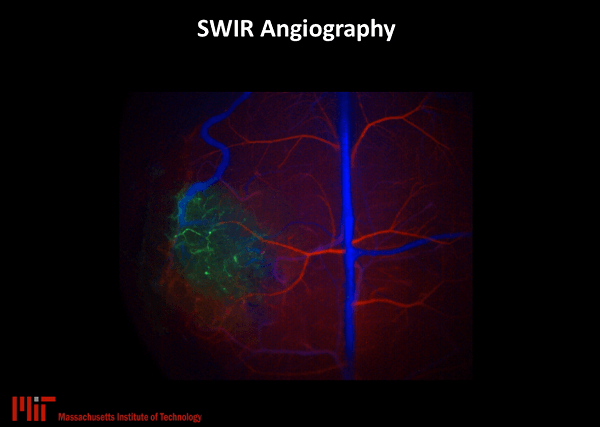Princeton Instruments, a world-renowned manufacturer of sensitive low-light imaging and spectroscopic instruments, hails the introduction and evaluation of a new class of high-quality, indium-arsenide (InAs)–based, short-wave infrared (SWIR)–emitting quantum dots for use as in vivo imaging agents by researchers at the Massachusetts Institute of Technology. A state-of-the-art Princeton Instruments NIRvana® camera featuring a thermoelectrically cooled indium gallium arsenide (InGaAs) focal plane array (FPA) was employed in the quantum dot evaluation.

Details of this groundbreaking work can be found in the recently published article, “Next-generation in vivo optical imaging with short-wave infrared quantum dots” [Bruns OT, et al. Nature Biomedical Engineering. 2017, 1].*
Imaging in the SWIR region of the spectrum affords several advantages, including the abilities to circumvent unwanted fluorescence backgrounds and to probe more deeply into sample surfaces. Lead authors Dr. Oliver T. Bruns and Dr. Thomas S. Bischof, under the auspices of principal investigator Dr. Moungi G. Bawendi, demonstrated that the aforementioned new core/shell quantum dots hold great promise for the next generation of in vivo SWIR imaging.
To demonstrate a few of the key capabilities of the InAs-based quantum dots, SWIR imaging performed with a Princeton Instruments NIRvana camera was utilized to measure the heartbeat and breathing rates in awake and unrestrained mice, as well as to quantify the lipoprotein turnover rates of several organs simultaneously in real-time in the mice. The MIT researchers also generated detailed three-dimensional quantitative flow maps of brain vasculature by intravital microscopy, visualizing the differences between healthy tissue and a tumor in the brain.
These newly designed, high-quantum-yield, size-tunable, SWIR-emitting quantum dots permit biological multicolor-optical imaging with an unprecedented combination of deep penetration, high spatial resolution, and fast acquisition speed.